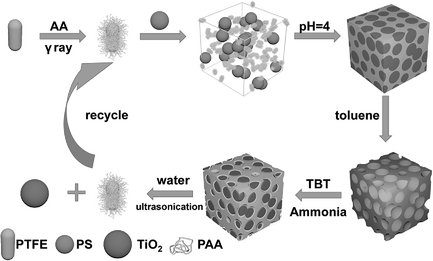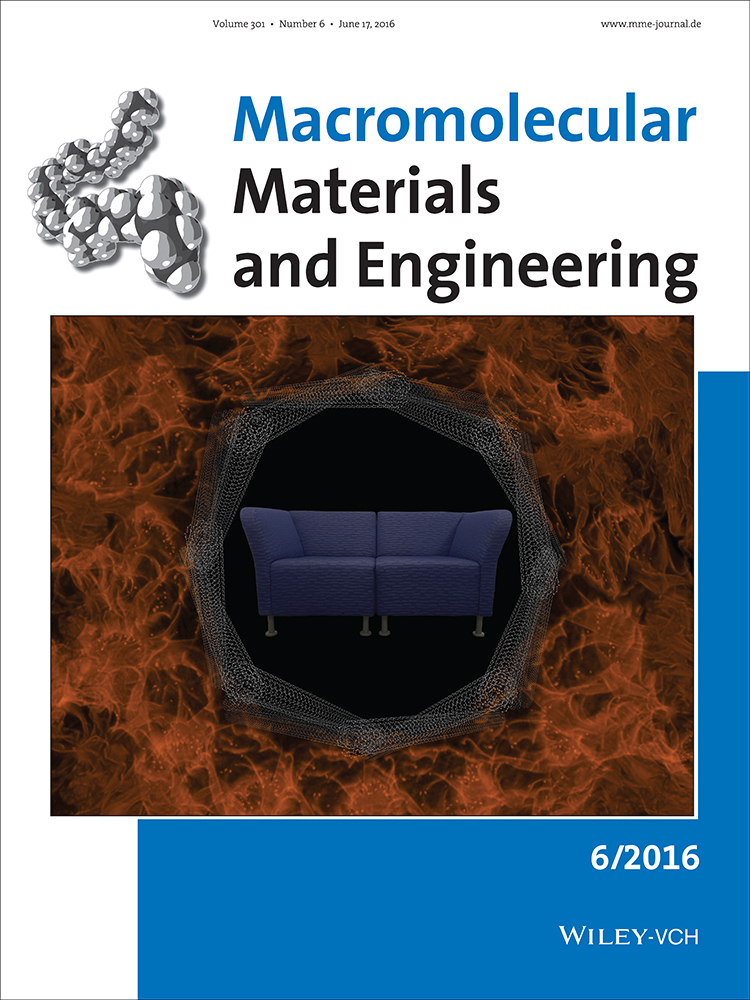Macroporous Polytetrafluoroethylene Film with a Reusable Matrix and Its Application as the Microreactors
Abstract
This work reports a simple and efficient preparation method of an inverse-opal-like macroporous polytetrafluoroethylene (IO-PTFE) film with a reusable matrix. At first, the pH-responsive poly(acrylic acid) (PAA) is grafted on the PTFE latex particles induced by γ-ray radiation. The stability of PAA grafted PTFE latex particles (PTFE-g-PAA) in water decreases in acid aqueous solution. As a result, PTFE-g-PAA particles can coprecipitate with monodispersed polystyrene (PS) microspheres from the acidic aqueous dispersion to form a composite particulate film. After the composite particulate film is etched with toluene to remove PS microspheres, a self-stand inverse-opal-like macroporous PTFE film can be successfully obtained. The macroporous PTFE film can be applied as the microreactor to synthesize uniform TiO2 particles. The separation of TiO2 microparticles and the recycle of PTFE-g-PAA particles can be simultaneously achieved simply in water by means of ultrasonification. The prepared TiO2 microparticles also show good photocatalytic performance. This work opens a new thought to prepare special macroporous polymeric materials, and expands the microsynthesis of inorganic or organic microparticles by taking advantage of polymeric macroporous materials.





